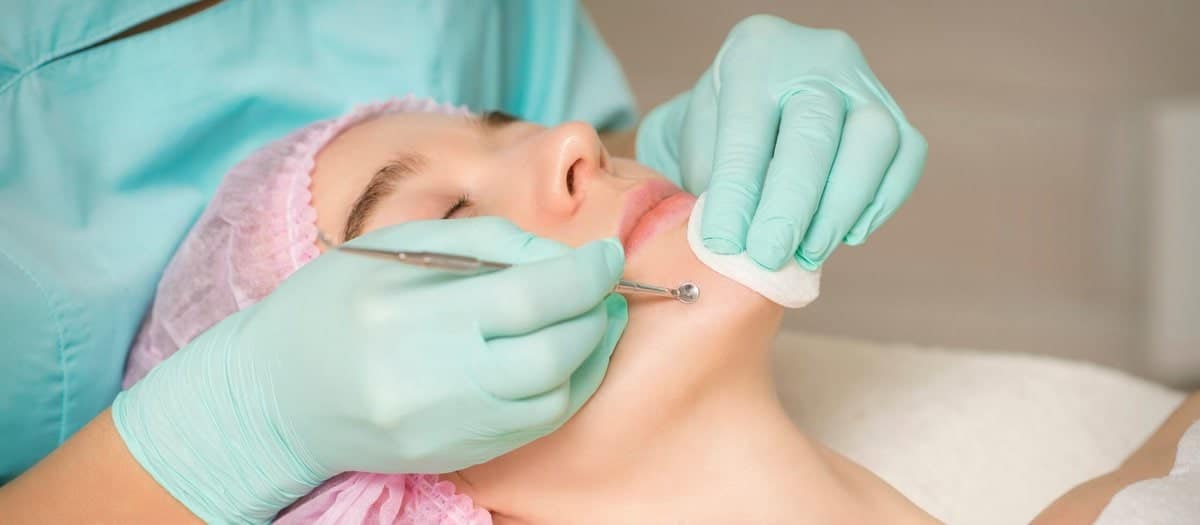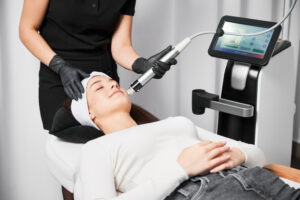Chin fat removal is today’s modern approach to double chin elimination. Let’s face it – we all don’t want that unwanted chin fat or the so-called ‘double chin’ becoming part of our regular appearance. But even if we are religiously following a diet regimen or an exercise scheme, these fat-reduction methods are ineffective toward chin fat removal.
Today, let us know more about chin fat removal, how it works, and if you can indeed remove chin fat. Read until the end and discover if this fat-reduction technique can also work for that stubborn fat on your chinny, chin, chin.
What is Chin Fat Removal?
Also called double chin surgery, chin fat removal is among the most common treatments offered by skin clinics and med spas. When dealing with skin aging, the neck is one of the initial body parts to showcase age, and, for some of us, fat is more likely to collect under the chin. This unwanted, extra fat and undesirable loose skin can significantly affect their overall jaw and facial profile.
Skin experts such as plastic surgeons can administer chin fat removal using any of the following procedures:
- Chin liposuction – is a procedure that removes stubborn, excess fat from under the chin.
- Neck lift – a treatment related to chin fat removal, also called lower rhytidectomy, involves removing the excess skin or tightening the neck skin muscles toward giving the face a much more contoured appearance.
- Submentoplasty – is another double chin surgery that combines the process of chin liposuction and the use of smaller incisions under the chin to tighten muscles.
All procedures can contribute to effective chin fat removal. However, people may not be good candidates for liposuction or submentoplasty if their skins aren’t elastic enough and have a loose or saggy appearance. A doctor usually recommends a neck lift when this is the case.
How Does Chin Fat Removal Work?
Chin liposuction works by inserting small tubes, called cannulas, into the chin in different areas. Utilizing gentle suctions, small and strategic chin fat removal amounts are taken from each location. This process results in a smoother, more even profile with reduced amounts of unwanted fat under the chin.
Meanwhile, submentoplasty works by making small under-chin incisions and using liposuction on the neck.
On the other hand, during neck lifts, surgeons make incisions behind the ear and sometimes underneath the chin, removing excess skin and tightening neck muscles toward chin fat removal.
Procedures for Chin Fat Removal
The following steps are some of the basics for chin fat removal using chin liposuction:
- Practitioners will examine the chin and neck areas, then make markings using pens or markers to note where they’ll later insert the cannulas.
- The skin is thoroughly cleansed using antiseptic solutions designed to reduce infection risks.
- The surgeon will then administer certain medications used for sedation, whenever desired, or inject local anesthetic or numbing medications into the skin.
- Then, they’ll create several small incisions in the skin, large enough only to introduce the liposuction cannula for chin fat removal.
- Next, they’ll insert liposuction cannulas and utilize back-and-forth or fanning motion to remove excess fat. They’ll pay close attention to each area’s chin fat removal process, ensuring a smooth, even facial appearance.
- Finally, bandaging will be applied whenever necessary. This step typically includes unique chin straps to help support the skin while it undergoes healing.
Next, we have two (2) related chin fat removal techniques: submentoplasty and neck lift surgery. These procedures involve making skin incisions. Some of the general steps followed for neck lift surgery include the following:
- Doctors or healthcare providers will mark the chin and neck areas with lines and arrows indicating the locations of the approach.
- Then, they’ll administer some IV medications or place you under general anesthesia for the procedure.
- Targeted areas will be cleansed using antiseptic solutions. Based on the anesthetic approach, doctors may or may not inject local anesthesia into the skin.
- Next, practitioners will make incisions, usually at the hairline areas and around and behind the ear. Then, they may begin removing the excess fat and skin from the neck. Also, they may tighten the neck muscle called platysma to make the skin appear more toned and promote chin fat removal.
- Finally, they’ll close these skin incisions using glue or stitch sutures. Typically, these sutures will heal and aren’t noticeable because it’s on a person’s hairline.
With submentoplasty, fewer incisions are administered, and doctors don’t remove excess skin like how it’s done with neck lifts. Instead, practitioners tighten the neck muscles to promote that more desirable sculpted appearance.
Common Targeted Areas
Chin fat removal is usually intended for people with unwanted excess fat, undesirable wrinkling, or lack of a jawline because of excess skin tissue.
Potential Risks and Possible Side Effects
Every time foreign instruments are administered and inserted into the skin, there are risks. Doctors or healthcare providers should discuss these before the chin fat removal procedure to ensure all the correct information is given to you before proceeding.
Some of the possible risks of chin fat removal can include the following:
- a decline in skin sensitivity
- anesthetic complications like breathing problems
- bleeding
- discomfort
- facial feature asymmetry
- infection
- nerve injury
- scarring
- swelling
Additionally, it’s entirely possible that you may not achieve the chin fat removal results you’re hoping for after surgery. That’s why it’s essential to discuss everything with your trusted doctor or healthcare provider about your chin fat removal goals, especially for your appearance post-surgery, to ensure they’re realistic.
What to Expect
Typically, it is expected to experience some swelling and discomfort following the chin fat removal procedure. The skin on the neck and chin areas may feel very tight because of swelling and bruising. If you have facial drains for blood and fluid buildup reduction in your neck, practitioners will usually remove these after 1-2 days.
Doctors or healthcare providers may recommend the application of antibiotic ointments to any incision areas. Typically, they suggest avoiding the sun or getting excess water on the face and chin for the next couple of days.
Furthermore, recovery time will significantly depend on your doctor’s surgical approach. Typically, chin liposuction may take a few days to at least a week before you can return to work. You may not return to work for a neck lift for about two weeks.
Final Thoughts on Chin Fat Removal
Having many options for chin fat removal gives you the freedom to choose. But always consult your trusted doctor or healthcare provider before undergoing any cosmetic treatment or procedure. Chin fat removal can only be successful if it’s properly administered.
Is chin fat removal the procedure for you? Our amazing friends at Amara Rejuve Medical Spa and Laser can help you today. Visit them now!









